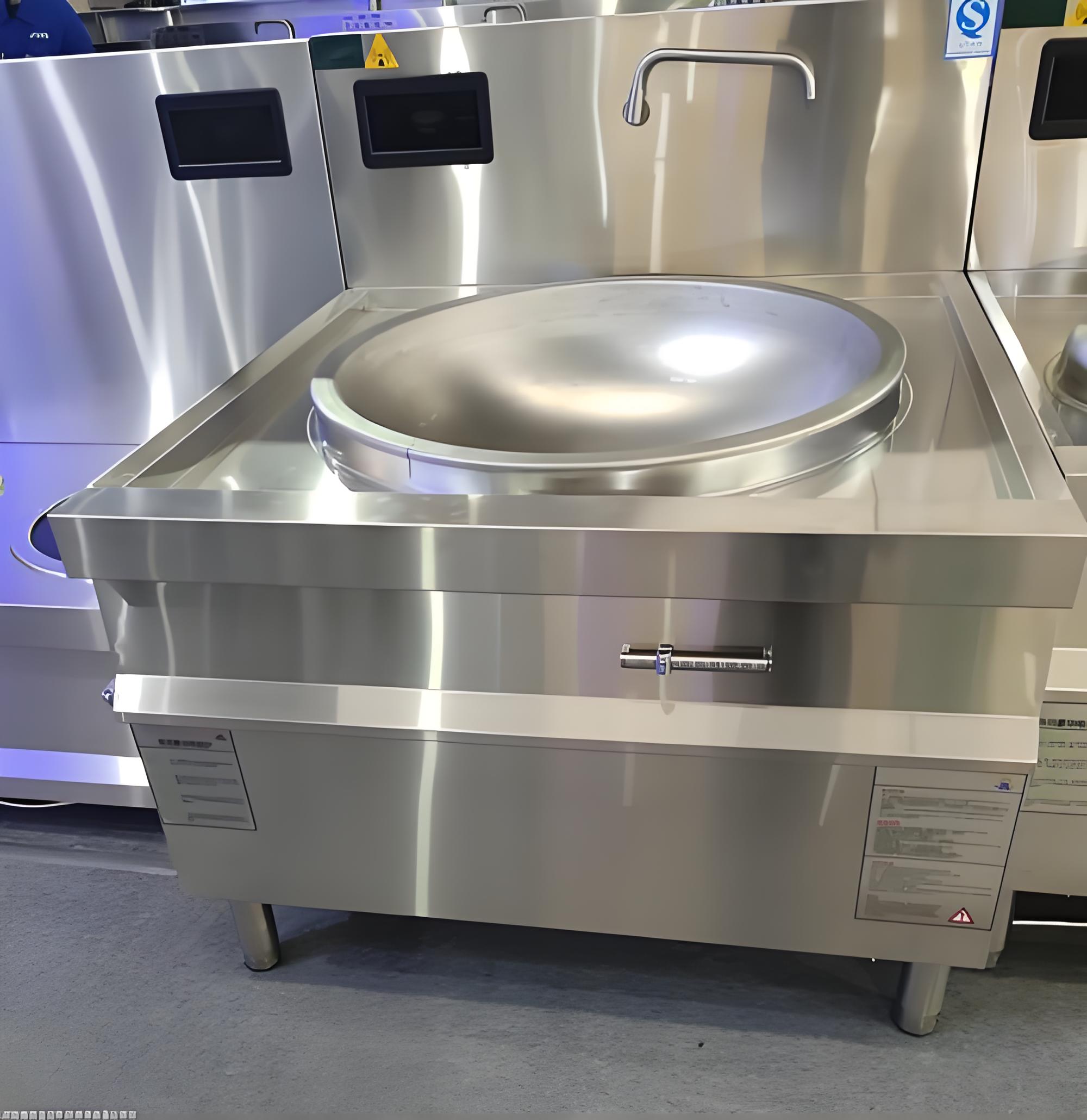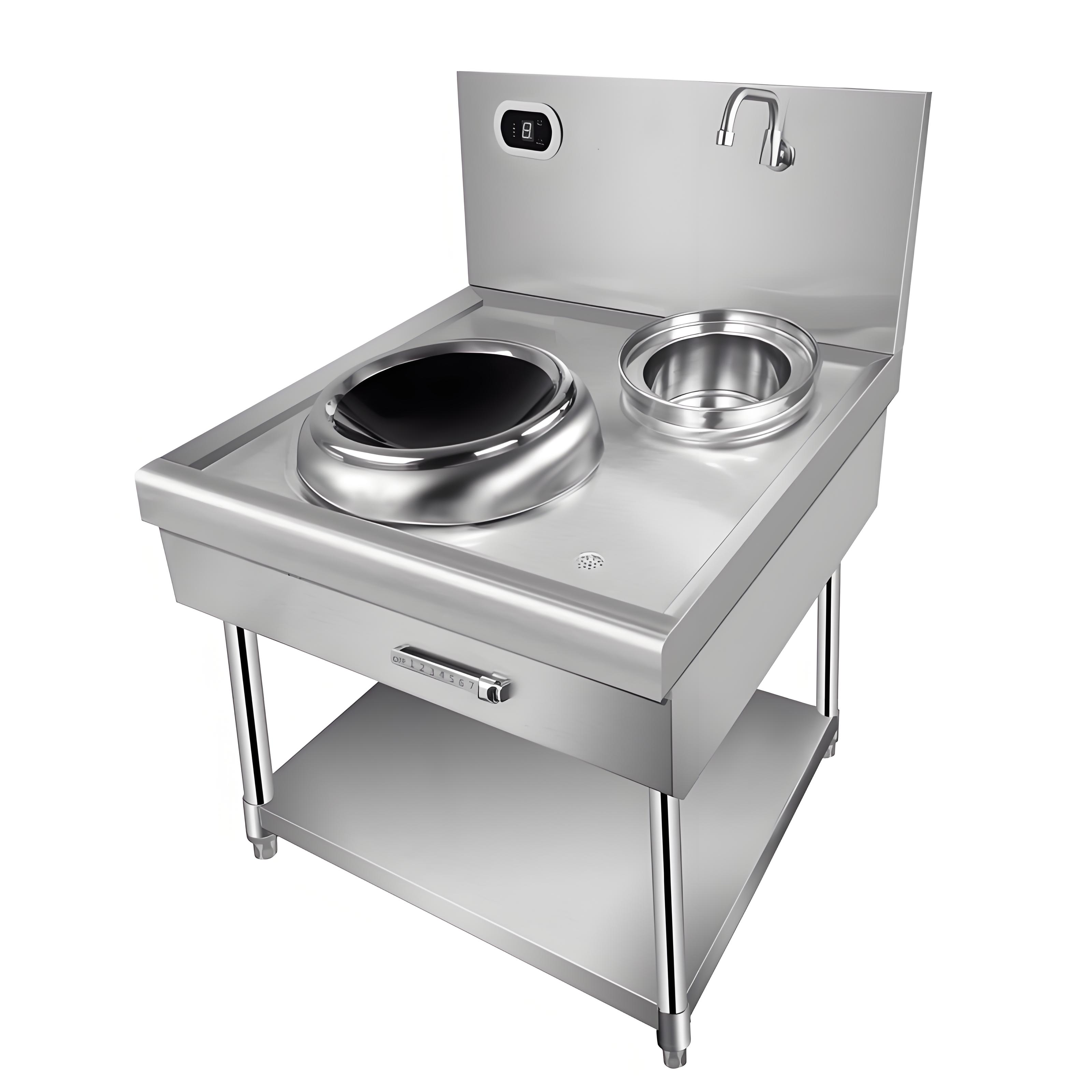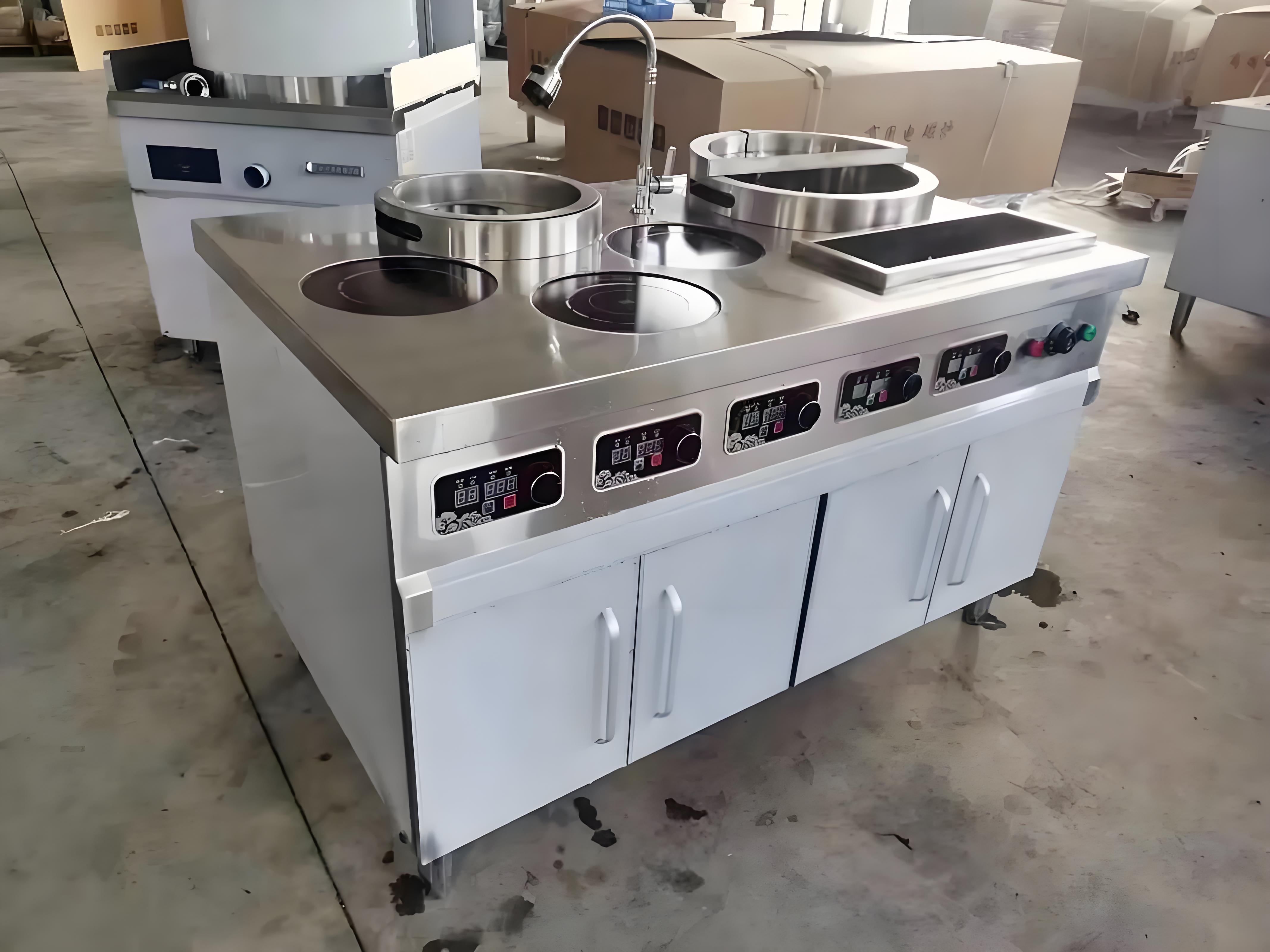As someone who’s spent years in the commercial kitchen equipment industry, I’ve seen trends come and go, but few innovations have reshaped professional cooking as profoundly as high-power commercial induction cookers. These machines are no longer just a niche choice for eco-conscious chefs or tech enthusiasts—they’ve become a cornerstone in modern kitchens, from bustling restaurants to high-volume catering operations. Yet, I often hear misconceptions about their functionality, cost, and practicality. If you’re considering integrating one into your kitchen or simply curious about how they work, let’s dive into what makes these cookers a game-changer, how they stack up against traditional options, and what you need to know to make an informed decision.

What Are High-Power Commercial Induction Cookers?
Let me start with the basics. Unlike gas or traditional electric stoves, induction cookers use electromagnetic fields to heat cookware directly. A copper coil beneath a glass-ceramic surface generates a magnetic field when powered, which induces an electric current in ferromagnetic cookware (like cast iron or certain stainless steels). This current creates heat within the cookware itself, not on the cooking surface. The result? Faster heating, precise control, and minimal energy waste.
In commercial settings, high-power induction cookers typically range from 3.5 kW to 45 kW, far surpassing the 1.8–3 kW of household models. This power range makes them ideal for tasks like rapid stir-frying, boiling large volumes of water, or searing meats in busy kitchens. I remember the first time I saw a 25 kW induction wok in action at a Cantonese restaurant—it brought a 10-liter pot of broth to a rolling boil in under three minutes, something a gas burner struggled to match without scorching.
Why Choose High-Power Induction in a Commercial Kitchen?
When I started in this industry, gas was king. Chefs loved the visible flame, the tactile control of a knob, and the familiarity of fire. But over the years, I’ve watched induction gain ground, and for good reason. Here’s why these cookers are worth considering:
Unmatched Efficiency
Induction cookers are 90–95% energy-efficient, compared to 40% for gas and **70–80% for traditional electric stoves. This means most of the energy goes directly into heating the food, not the surrounding air. In a commercial kitchen, where you’re cooking for hours, this efficiency translates to lower utility bills and a cooler working environment. I’ve been in kitchens where gas burners made the air stifling, requiring extra ventilation and cooling. With induction, the kitchen stays noticeably cooler, which keeps staff comfortable and reduces HVAC costs.
Precision and Control
One of the standout features of high-power induction cookers is their precise temperature control. Unlike gas, where you’re eyeballing flame size, or electric coils, which take ages to cool down, induction responds instantly. Many models offer power settings from 1 to 100 or temperature increments as fine as 1°F (0.5°C). For example, when tempering chocolate for a dessert course, I’ve used induction to hold a steady 86°F without a double boiler, something nearly impossible with gas. This precision ensures consistent results, whether you’re simmering sauces or searing steaks.
Safety First
Safety is a huge concern in commercial kitchens, and induction excels here. The cooking surface stays cool unless compatible cookware is present, reducing burn risks. There’s no open flame, so fire hazards drop significantly. I recall a client who switched to induction after a small grease fire caused a costly shutdown. Induction cookers also often come with automatic shutoff mechanisms and overheat protection, making them safer for high-pressure environments where staff might forget to turn off a burner.

Cleaner and Greener
Cleaning a gas range is a chore—grease traps, burner grates, and carbon buildup are a daily battle. Induction cooktops, with their smooth glass-ceramic surfaces, wipe clean in seconds. Plus, they’re emission-free, unlike gas stoves, which release pollutants like nitrogen dioxide and carbon monoxide. In my experience consulting with restaurants, switching to induction often aligns with sustainability goals, especially in regions with strict environmental regulations.
Key Features of High-Power Commercial Induction Cookers
Not all induction cookers are created equal, especially in commercial applications. Here’s a breakdown of features to look for, based on my years of evaluating equipment:
|
Feature |
Description |
Benefit |
Example Application |
|---|---|---|---|
|
Power Range |
Typically 3.5 kW to 45 kW, adjustable in fine increments |
Handles high-volume tasks like boiling or stir-frying |
Large-scale catering, wok cooking |
|
Digital Controls |
Precise power/temperature settings with LED displays |
Ensures consistent cooking results |
Tempering chocolate, simmering sauces |
|
Durable Surface |
Ceramic glass, resistant to 700°C and heavy loads (up to 125 kg) |
Withstands heavy cookware and rough use |
Busy restaurant kitchens |
|
Safety Features |
Auto shutoff, pan detection, overheat protection |
Reduces accidents and energy waste |
High-pressure environments |
These features make high-power induction cookers versatile for various cooking styles, from delicate braising to high-heat wok cooking. For instance, I’ve seen chefs use a 12 kW induction wok to achieve wok hei—that coveted smoky flavor—without the mess of gas flames.
Comparing Induction to Gas and Electric
To help you decide if induction is right for your kitchen, let’s compare it to traditional options. I’ve worked with all three, and each has its place, but the differences are stark:
|
Aspect |
Induction |
Gas |
Electric |
|---|---|---|---|
|
Efficiency |
90–95% | ~40% | 70–80% |
|
Heat-Up Speed |
Boils water in 2–3 minutes |
4–5 minutes |
5–7 minutes |
|
Temperature Control |
Precise, instant adjustments |
Visual flame adjustments, less precise |
Slow to heat and cool |
|
Safety |
Cool surface, no open flame |
Open flame, higher fire risk |
Hot surface, burn risk |
In my early days, I was skeptical about induction’s ability to match gas for high-heat tasks like stir-frying. But after seeing a 20 kW induction wok outperform a 30,000 BTU gas burner in speed and consistency, I was sold. The data backs this up: induction cooktops can boil water 20–40% faster than gas or electric, saving time in fast-paced kitchens.

Addressing Common Misconceptions
Over the years, I’ve heard plenty of myths about commercial induction cookers. Let’s clear up a few:
“Induction can’t handle high-heat cooking.”
Wrong. High-power models (15 kW and up) are designed for intense tasks like stir-frying or searing. I’ve seen a 25 kW induction wok maintain wok hei in a busy dim sum restaurant, matching or surpassing gas burners.
“You need all-new cookware.”
Not entirely. Any ferromagnetic cookware (cast iron, enameled cast iron, or certain stainless steels) works. A quick test is to see if a magnet sticks to the bottom of your pan. In my experience, most commercial kitchens already have compatible cookware, though you might need to replace aluminum or copper pans.
“Induction is too expensive.”
Yes, the upfront cost is higher—$1,500 to $10,000 for high-power units compared to $500–$3,000 for gas ranges. But the energy savings and lower maintenance costs often offset this within a year or two. I worked with a café that recouped their investment in 18 months through reduced utility bills and fewer repairs.
“It’s complicated to use.”
Not at all. Modern induction cookers have intuitive digital controls and programmable presets. I trained a team of line cooks to use a 12 kW induction range in under an hour, and they were churning out consistent dishes by the end of the shift.
Practical Considerations for Adoption
If you’re thinking about switching to induction, here are some practical tips based on my experience:
Cookware Compatibility
Check your existing cookware. If a magnet sticks to the bottom, it’s induction-ready. For high-volume kitchens, invest in heavy-duty ferromagnetic pans (8–12 inches for optimal efficiency). I recommend cast iron or stainless steel woks for Asian cuisine, as they distribute heat evenly and withstand high power.
Power Requirements
High-power induction cookers often require 208–240V, 3-phase power, which may necessitate electrical upgrades. I’ve helped clients work with electricians to install dedicated circuits, typically costing $1,000–$3,000 depending on the kitchen’s setup. Check with your local utility provider for rebates, as many regions offer incentives for switching to energy-efficient appliances.
Space and Installation
Induction cookers come in countertop, drop-in, or freestanding models. Countertop units (3.5–8 kW) are great for food trucks or small kitchens, while freestanding units (15–45 kW) suit large restaurants. I once advised a catering company to use drop-in units for a seamless buffet setup, which saved space and looked sleek.

Staff Training
Transitioning to induction requires minimal training. Focus on teaching staff to use digital controls and understand power settings. I’ve found that demonstrating tasks like boiling water or searing meat helps chefs appreciate induction’s speed and precision.
Real-World Applications
In my career, I’ve seen induction cookers transform operations across various settings:
Restaurants: A fine-dining restaurant I consulted for switched to a 20 kW induction range to handle their sauce-heavy menu. The precise temperature control eliminated scorching, and the kitchen stayed cooler during dinner rushes.
Catering: A catering company used 8 kW countertop units for on-site cooking at events, reducing setup time and eliminating the need for gas canisters.
Food Trucks: A food truck operator I worked with adopted a 5 kW portable induction cooker, saving space and avoiding ventilation issues in their compact setup.
These examples show induction’s versatility, but it’s not a one-size-fits-all solution. If your kitchen relies heavily on non-ferromagnetic cookware or lacks the electrical infrastructure, you’ll need to weigh the costs of upgrades against the benefits.
The Future of Commercial Induction
Looking ahead, I’m excited about where induction technology is headed. Manufacturers are developing zoneless induction surfaces with multiple coils, allowing you to place pans anywhere on the cooktop. Battery-assisted models, like the Copper Charlie, are also emerging, potentially reducing the need for costly electrical upgrades. In my view, as energy costs rise and sustainability becomes non-negotiable, induction will dominate commercial kitchens.
Wrapping Up
After years of working with kitchen equipment, I can confidently say that high-power commercial induction cookers are more than a trend—they’re a revolution. Their efficiency, precision, safety, and ease of maintenance make them a smart choice for any professional kitchen. Yes, the initial investment and learning curve can be daunting, but the long-term benefits—lower costs, happier staff, and consistent results—are hard to ignore. If you’re ready to modernize your kitchen, take the time to assess your needs, test your cookware, and explore available models. The right induction cooker could be the key to elevating your culinary game.

Related Questions and Answers
Q: Can induction cookers handle Asian-style wok cooking?
A: Absolutely. High-power induction woks (15–25 kW) are designed for stir-frying and can achieve wok hei. The curved ceramic glass surface heats the wok evenly, and precise controls let chefs adjust heat instantly, mimicking gas flame techniques.
Q: Are induction cookers worth the higher upfront cost?
A: In most cases, yes. The 90–95% energy efficiency and reduced maintenance costs often offset the initial price ($1,500–$10,000) within 1–2 years. Plus, rebates from utility providers can lower the cost.
Q: How do I know if my cookware is compatible?
A: Use the magnet test. If a magnet sticks to the bottom of your pan, it’s ferromagnetic and will work with induction. Cast iron, enameled cast iron, and certain stainless steels are ideal.
Q: Do induction cookers require special electrical setups?
A: High-power models typically need 208–240V, 3-phase power. You may need to upgrade your kitchen’s electrical system, which can cost $1,000–$3,000. Always consult a licensed electrician.
Q: How hard is it to train staff on induction cookers?
A: It’s straightforward. Most cooks adapt within an hour, especially with intuitive digital controls. Demonstrating key tasks like boiling or searing helps build confidence.




